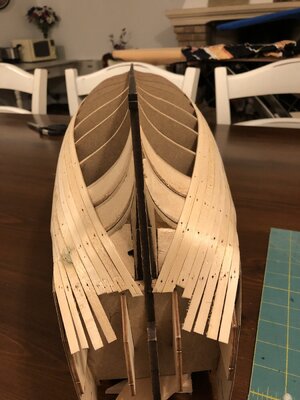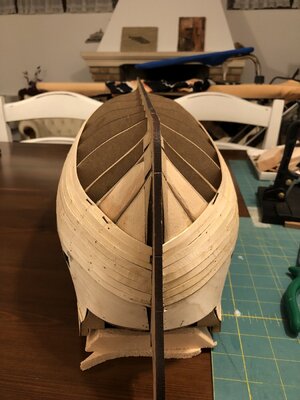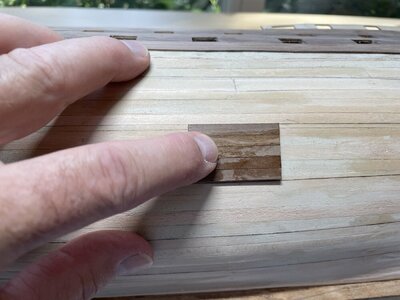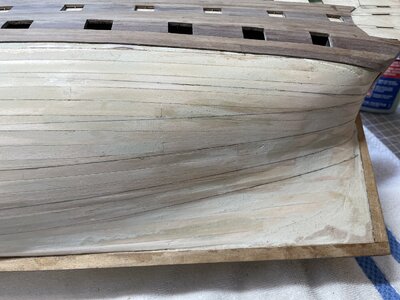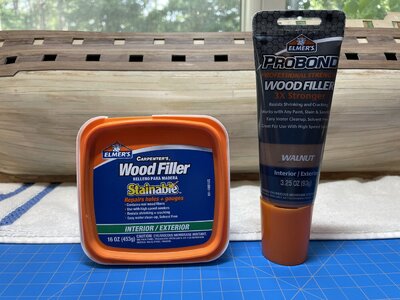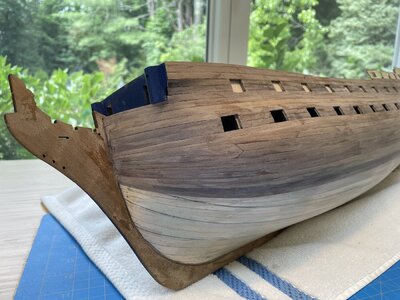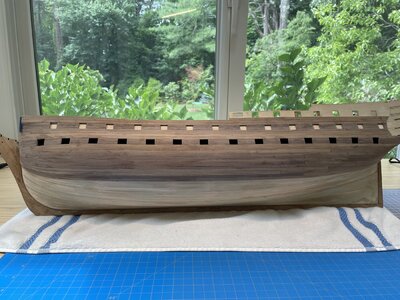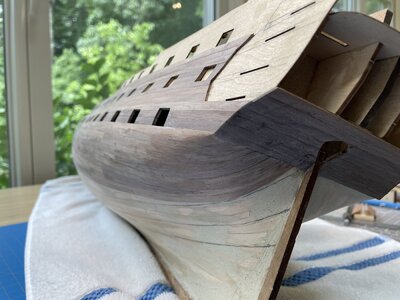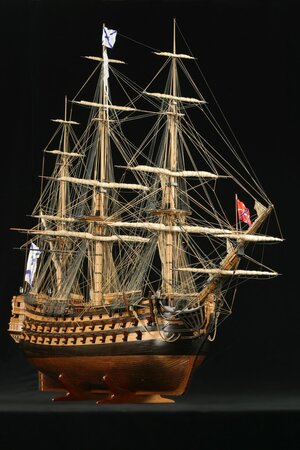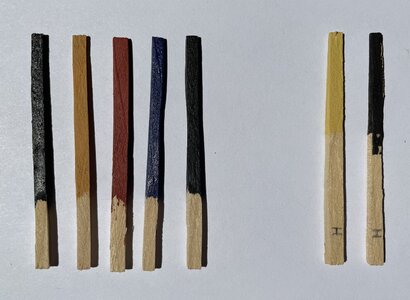Hi Antonio and thank you for your comment. The glues I’m using are Weld Bond for the frame and for the first layer planking, and ZAP-A-GAP Medium CA+ and Z-ENDS for the second layer planking. The Weld Bond was recommended by Bob Hunt for its superior strength and because it can be de-bonded. I did notice that when cutting through a Weld Bond joint the glue remains slightly flexible. ZAP-A-GAP works great for the second layer planking. It bonds within 10 seconds, so you don’t need to use clamps or pins to hold the planks. I pre-fit the planks before applying glue and draw a pencil line under the edge of the plank to know where to apply glue. I apply glue to about ¼ the length of the hull at a time when installing a full-length plank. Start at one end applying a little pressure working along the plank, then continue adding a little more glue and moving on. I do need to pre-bend the planks at the bow and stern since the ZAP-A-GAP bonds quickly and I don’t have a lot of time to get a good fit. Bending and installing the 1 mm x 5 mm walnut planks turned out to be easier than I anticipated. They are quite flexible and easier to install than the first layer planking especially when using CA glue.My compliments, Andre great job.
I am finishing the first planking of my Vanguard and I am using aliphatic glue.
What kind of glue are you using for the second planking?
Antonio
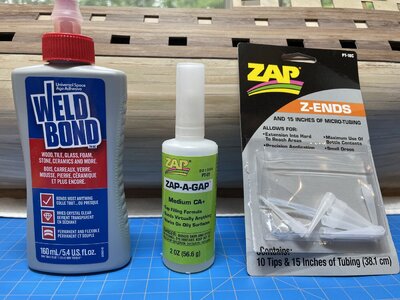
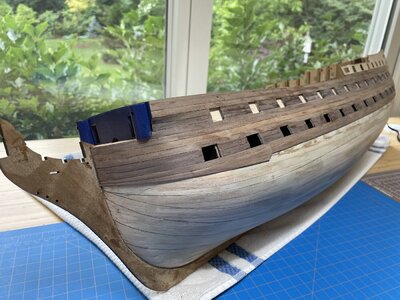
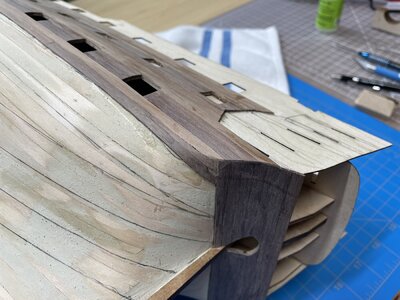
A little more progress on the second layer planking. Not moving too quickly on the second layer planking. Although I’m retired, there are many things keeping me occupied, mainly our landscaping at this time of year and there is family and grandchildren. Not complaining, just commenting if anyone is wondering why this guy is so slow.




